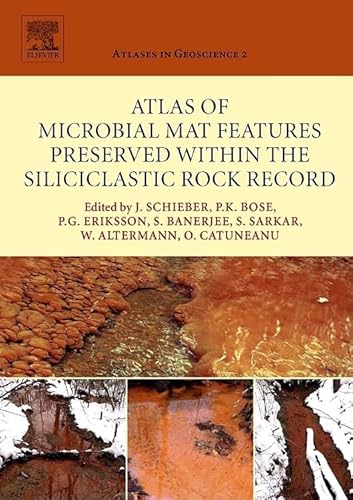Drawing on a combination of modern occurrences and likely ancient counterparts, this atlas is a treatise of mat-related sedimentary features that one may expect to see in ancient terrigenous clastic sedimentary successions. By combining modern and ancient examples, the connection is made to likely formative processes and the utilization of these features in the interpretation of ancient sedimentary rocks.
Professor Wladyslaw Altermann is a regional geologist with expertise in Precambrian sedimentary systems, carbonate rocks, early life evolution, and more recently, CO₂ sequestration in South Africa. Originally from Poland, he earned his MSc and PhD (Dr. rer. nat.) at the Free University of Berlin (West), focusing on Permo-Carboniferous rocks of Thailand and Malaysia. He also worked for the German Federal Institute for Geosciences and Natural Resources (BGR) in Hannover and in Peru.
In 1988, Prof. Altermann moved to South Africa, which became his third home. After a postdoctoral fellowship at the University of Stellenbosch, he returned to Germany to join LMU Munich, where he completed his second doctorate (Dr. habil.) in 1998, studying Archean carbonates, stromatolites, BIFs, and the western Kaapvaal Craton's structural geology.
Prof. Altermann held postdoctoral positions at UCLA (USA), CBM–CNRS Orléans (France), and the University of Western Australia (Perth). He later became Associate Professor at LMU Munich, where he served as interim chair for several professorial positions and served as Honorary Professor at Shandong University of Technology (China) from 2003 to 2005. In 2009, he returned permanently to South Africa, joining the University of Pretoria as the Kumba-Exxaro Chair in Geodynamics of Mineral Deposits (mining industry supported Chair) and later becoming Head of the Department of Geology.
Throughout his career, Prof. Altermann has been deeply involved in the scientific community, serving on national committees and editorial boards for international journals and as editor of books and special volumes. He was a Vice-President of the Geological Society of Africa and Chairman of the South African Committee for Stratigraphy. He retired from UP in 2019 and has since been working as a freelance geological consultant in Pretoria.
Octavian Catuneanu is a Professor in the Department of Earth and Atmospheric Sciences at the University of Alberta, with PhD degrees from the University of Toronto and the University of Bucharest. He is the recipient of several distinctions in the field of Geology, including the W.W. Hutchison Medal of the Geological Association of Canada for exceptional advances in earth science research, and best paper awards from the European Association of Geoscientists and Engineers, the Geological Society of America, and the Romanian Academy of Sciences. Octavian Catuneanu served as the Editor-in-Chief of the journal of Marine and Petroleum Geology, Chair of the Task Group on Sequence Stratigraphy of the International Subcommission on Stratigraphic Classification, Chair of the North American Commission on Stratigraphic Nomenclature, and member of the editorial board of several journals in North America, Europe, and Africa. He is the editor of several books and special issues, author of numerous publications in the fields of sedimentology, stratigraphy, and basin analysis, and instructor of sequence stratigraphy and related disciplines for universities, conferences, and companies worldwide. The first edition of his “Principles of Sequence Stratigraphy” textbook (Elsevier, 2006) received the 2007 “Outstanding Academic Title” Choice Award from the American Library Association and remains a best-selling title.
